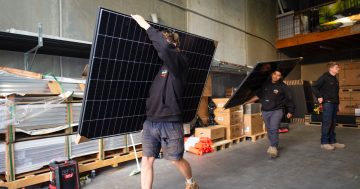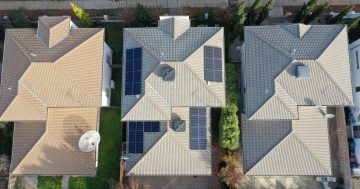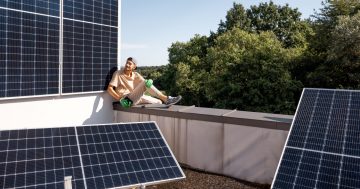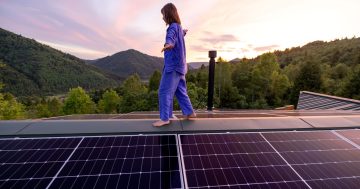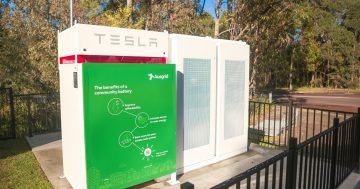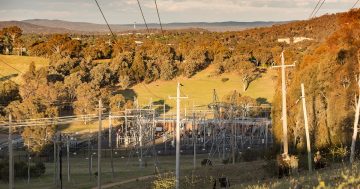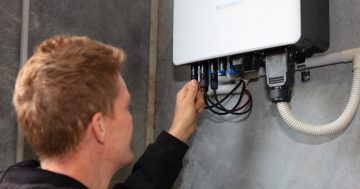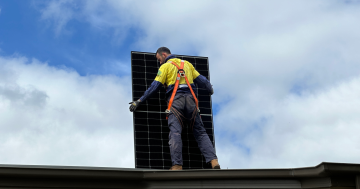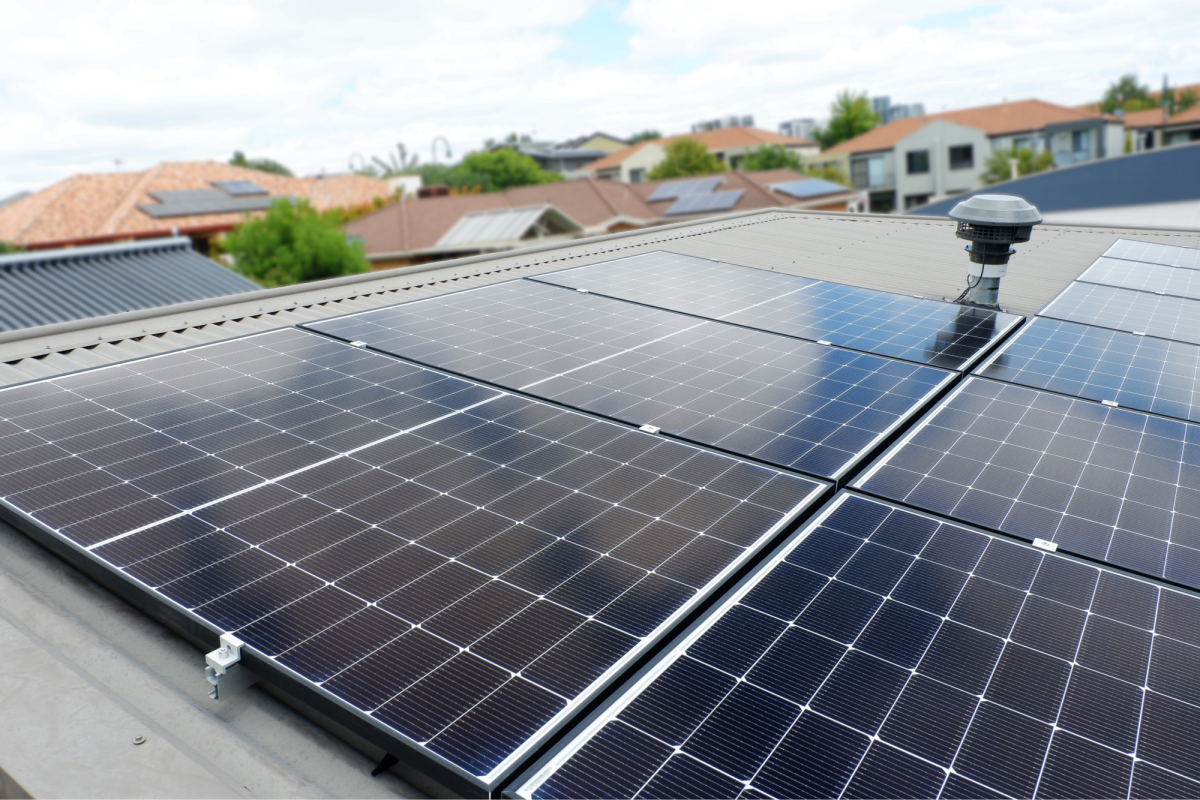
ACT electricity customers will be encouraged to power up during the day with a new cheaper tariff when solar is surging. Photo: Mondiaux Solar.
ACT solar panel owners have escaped a charge for the energy they export to the grid during the middle of the day for the next five years. Instead, they will be encouraged to change their consumption habits with a new lower ‘solar soak’ charge.
Ausgrid, which has about 280,000 customers in NSW with rooftop solar panels, has introduced a two-way tariff system to encourage solar panel owners to export their power into the grid in the evening when it is most needed.
It had been feared that the ACT might follow suit but Evoenergy has opted for a carrot instead of stick.
Ausgrid’s two-way tariff system will include a charge of 1.2 cents a kilowatt hour to send electricity to the grid between 10 am and 3 pm once exports rise above a free threshold.
However, households could also receive 2.3 cents a kilowatt hour if they export power during the peak demand time of 4 pm to 9 pm.
This comes after the Australian Energy Market Commission introduced new rules designed to smooth out the lumpiness in the electricity network caused by the oversupply of solar power during the day when it was not needed but was straining the network.
It would also allow energy companies to pay for upgrades to their networks so they could handle an increasing amount of solar being produced.
The rule change aimed to facilitate small-scale solar into the grid and support the growth of batteries and electric vehicles
The ACT’s Evoenergy had sought two-way tariffs for residential properties and batteries but was rebuffed by the AER on the latter.
It withdrew the two-way proposals in a revised tariff structure statement. Instead, it included a ‘solar soak’ charge, which offers a lower tariff to incentivise all customers to use energy during the peak period of solar production during the day.
Evoenergy told Region that a solar soak period between 11 am and 3 pm would signal that network costs were relatively low at this time of the day and help manage exports on the network.
“With the ongoing uptake of solar in the ACT, the solar soak charge is to reward customers with a lower price for ‘soaking up’ energy during this time,” a spokesperson said.
Its introduction would incentivise the use of solar power during peak production hours, reducing the need for significant upgrades to network infrastructure.
“The tariff structure statement was developed following extensive engagement and consultation with customers and community groups, as well as analysis of export peaks on the electricity network,” the Evoenergy spokesperson said.
The solar soak charge will commence on 1 July with the new tariff structure statement for the 2024-29 period.
The advent of export charges has long been expected, given the demands solar puts on networks and the unfairness of customers without panels having to pay for upgrades.
However, rooftop solar owners and some in the industry say export charges will slow solar take-up and that the energy companies have underspent on upgrading the network.
Tim Sturgiss from ACT solar panel and battery installation firm Huglo Solar said the cost of an export charge to households and payback periods would be only marginal relative to the value of a solar system.
“The alternative was not allowing you to export because the network can’t handle it,” he said.
Mr Sturgiss said households could change their consumption patterns to avoid or lessen such a charge, something Evoenergy’s solar soak incentive will now encourage.
He said people could use timers to charge vehicles and run appliances such as dishwashers, air conditioners and hot water systems during the day when the sun was up.
Mr Sturgiss said consuming more of your own energy was the holy grail.
He said using batteries, starting at just under $10,000, remained a marginal investment unless the household was a high-consumption household with a lot of solar or was in a location where brownouts and blackouts were common, such as just outside the ACT.
Mr Sturgiss said the days of feed-in tariffs were numbered, and people needed to be clear-headed about why they wanted to invest in a system.
Interest rates, eligibility changes to finance schemes and the cost of living were greater drags on the industry than export charges.
The Clean Energy Regulator said that as of 30 April 2024, 57,185 small-scale solar power systems had been installed in the ACT, of which 3964 had batteries.












